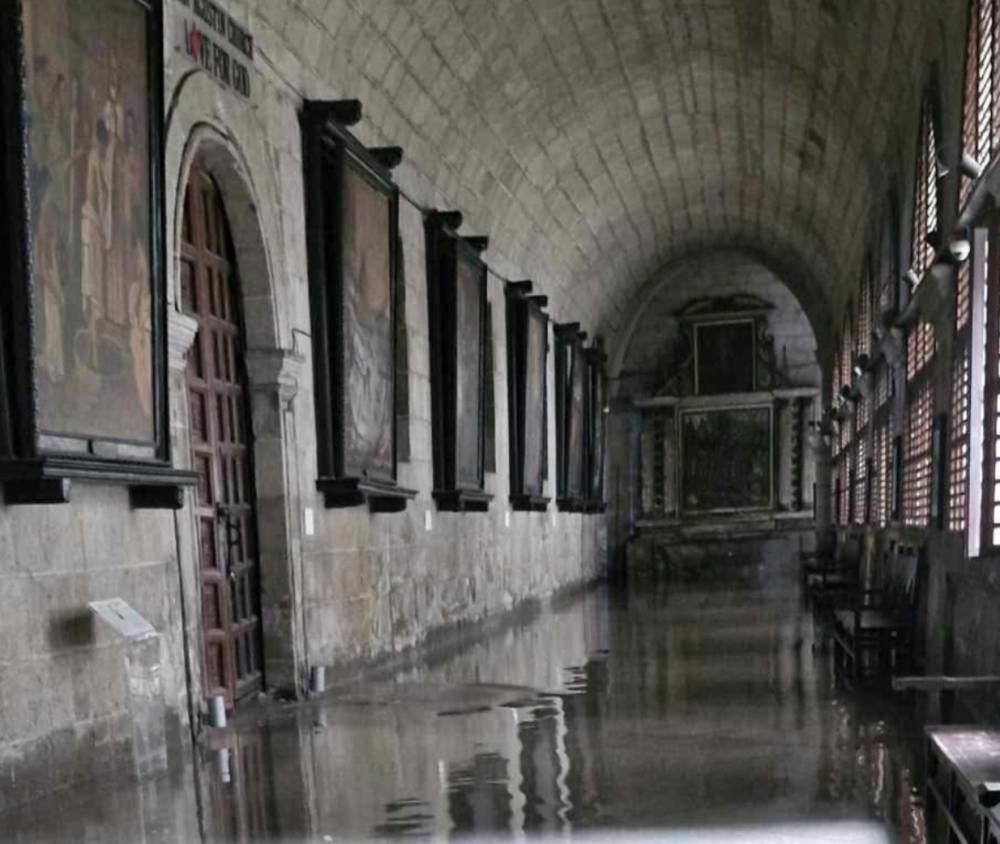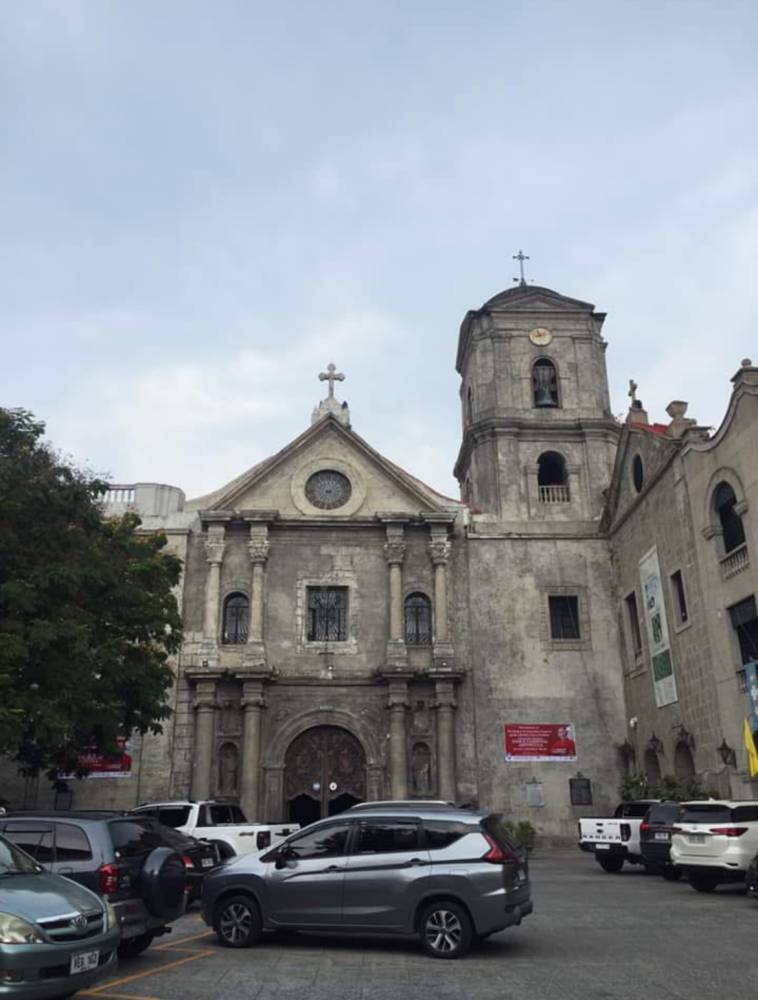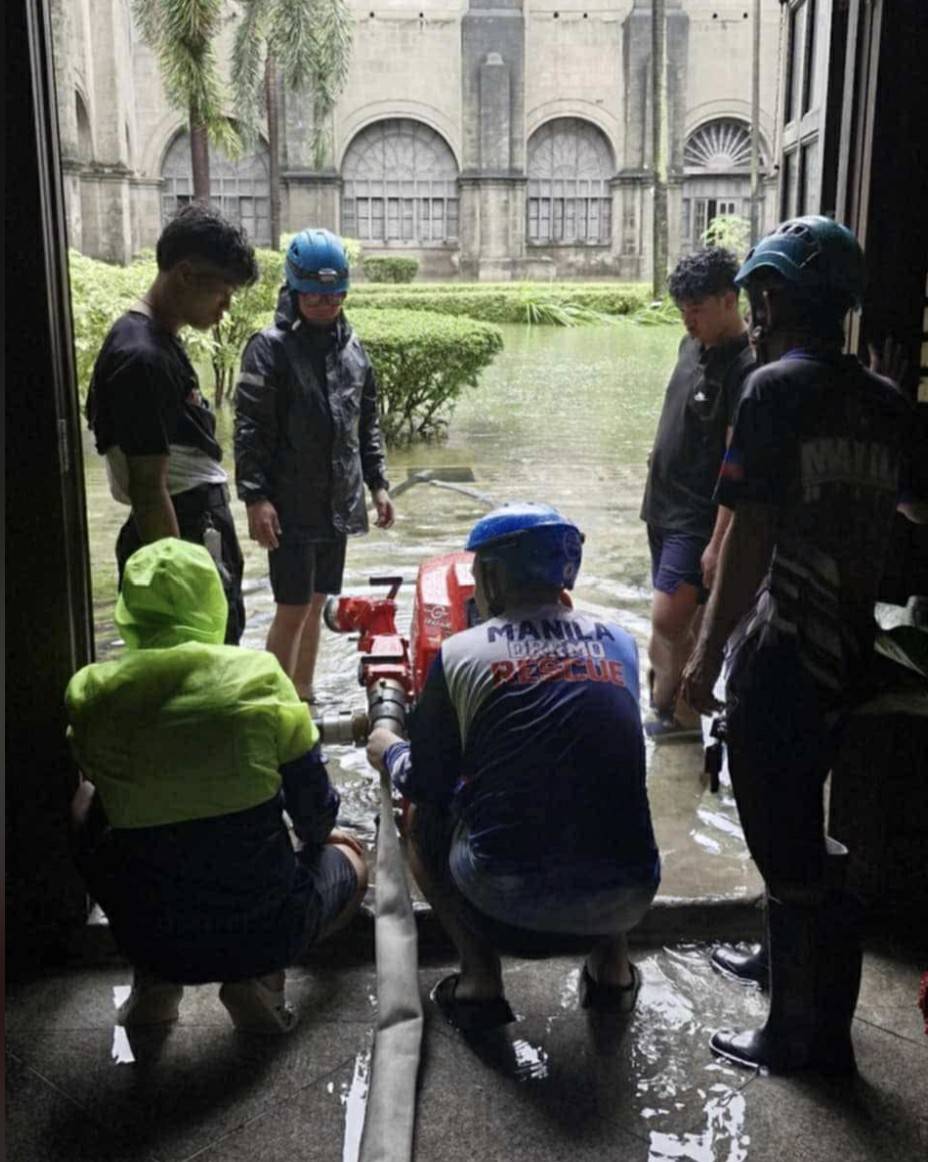Flooding at historic San Agustin Church raises deeper concerns

The combined effects of storms “Crising” (international name: Wipha) and “Dante” (Francisco), the southwest monsoon or “habagat,” and Typhoon “Emong” (Co-may) resulted in the flooding of the San Agustin Church complex in Intramuros, Manila, on Thursday.
It is the second such incident to hit the Augustinian compound in two years, after it was also flooded during the onslaught of Typhoon “Carina” (Gaemi) on July 25 last year.
In the most recent incident, up to knee-deep floodwaters affected parts of the historic 400-year-old complex, which was declared a Unesco World Heritage Site in 1993, along with three other Baroque churches in the country.
It was not clogged drainage that caused the problem but exhausted pumps, said San Agustin Museum director Fr. Ricky Villar.
Ceiling seepage
In 2012, four sump pits with high-capacity centrifugal pumps were installed in the complex, but four of the pumps failed this time due to possible overheating following three days of nonstop operations.
A number of these pumps also failed last year but were subsequently repaired, Villar said. Replacing the pumps with new ones is now an option, he added.
The floodwaters, which affected the museum lobby, cloisters, exhibition halls, and church interior, were successfully pumped out on the early afternoon of the same day, through the help of the Manila local government. Mayor Isko Moreno himself supervised the operations.

Apart from the flood, ceiling seepage could indicate a more serious problem for the complex.
In a first for San Agustin, water seepage was recorded on Thursday to at least Friday, particularly in the area underneath the belfry, which affected the “ante coro” at the second level, and the area beneath the choir loft.
Based on a video obtained by the Inquirer, the water looked like a mini waterfall, running down from unseen cracks on the vaulted ceiling.
“The flooding and ceiling seepage at San Agustin is very alarming as it may indicate larger unseen damage to the roof and ceiling structure,” Ivan Henares, director general of the Unesco National Commission of the Philippines (Unacom), told the Inquirer.
If the seepage “is not properly addressed, it could potentially lead to collapse,” he added.
Henares said that “given the paramount importance of San Agustin to the country, it would be regretful if something happens to it because of neglect.”
To avoid this scenario, “the church will need to undergo a massive retrofit and restoration, something we hope the Philippine government will undertake,” he added.

Possible closure
Henares shared that the Unacom is working with the Augustinian Order as well as national cultural agencies led by the site manager, the National Commission for Culture and the Arts (NCCA), to obtain funds from the Office of the President and Congress “to ensure [San Agustin’s] protection amid the climate crisis.”
Villar said the temporary closure of the church has not been ruled out, since the issue involves the complex’s “structural integrity and public safety.”
The San Agustin Church is an active church, meaning regular church activities are held there. It is also one of the country’s most important heritage sites, drawing a constant flow of tourists and visitors. Hence, public safety is of utmost importance, Villar said.
The possible closure will depend on the result of a multiagency assessment of the structure as discussed during an emergency meeting conducted on Friday afternoon involving the NCCA led by its head Ino Manalo, the National Historical Commission of the Philippines represented by its chair Regalado Trota Jose Jr., the National Museum of the Philippines led by Jeremy Barns, Unacom represented by Len Barrientos, and representatives from the Intramuros Administration.
Villar said in-depth studies involving heritage conservation experts will soon commence to determine the proper approaches to be undertaken on the church, which has had “no major interventions, no seismic retrofitting since its completion in 1604.”
“The church complex survived natural and man-made calamities, and it is about time to do something to preserve it,” Villar said.
There are other problems that need to be addressed, according to Villar, such as damp walls caused by the rising level of the water table, which affects the integrity of the adobe material and the drainage system around Intramuros.

















